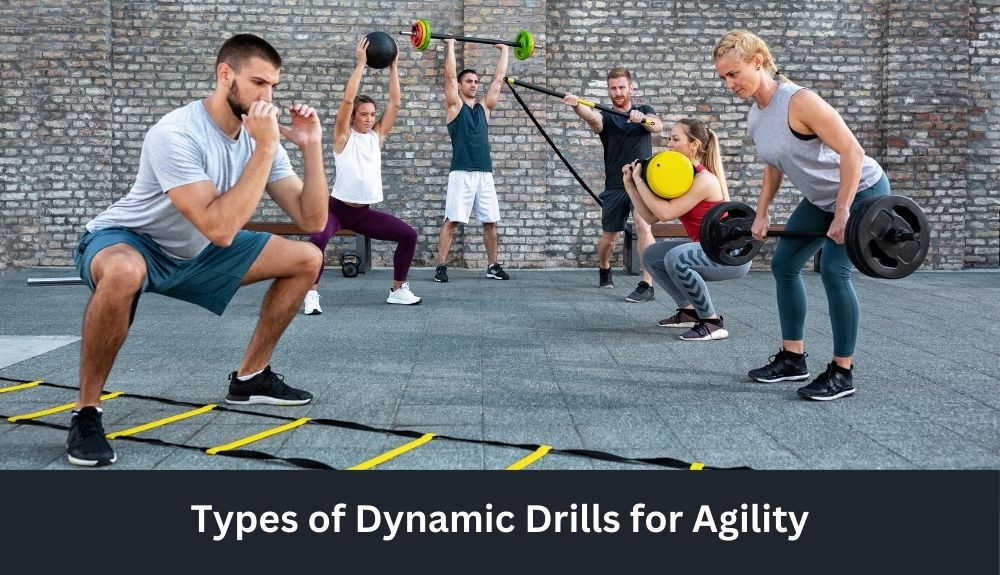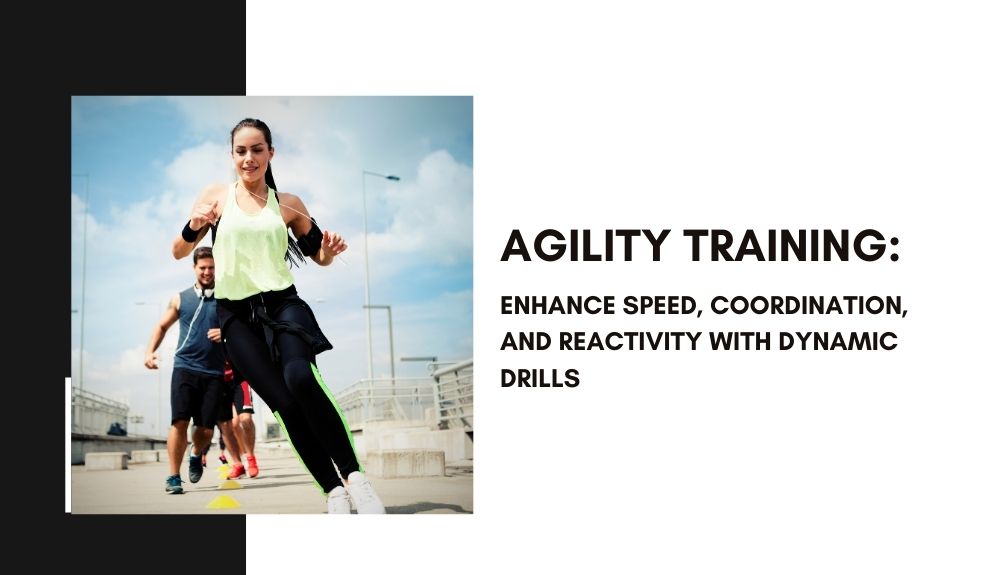Are you looking to take your fitness routine to the next level? Want to enhance your speed, coordination, and reaction time like never before? Look no further than agility training! This dynamic form of exercise is not only fun and challenging but also incredibly beneficial for overall performance. In this blog post, we will delve into the world of agility training, explore its numerous advantages, discuss different types of drills you can incorporate, and provide tips on how to make the most out of this exciting workout regimen. Get ready to elevate your fitness game with agility training!
The Benefits of Agility Training
Agility training offers a multitude of benefits for individuals looking to enhance their overall fitness level. The dynamic nature of agility drills helps improve speed, coordination, and reactivity in various movements. By incorporating agility exercises into your routine, you can boost your athletic performance and increase your body’s ability to quickly adapt to different situations.
Additionally, agility training can help prevent injuries by improving joint stability and strengthening muscles that support proper movement mechanics. It also enhances cognitive function as participants need to think quickly on their feet while executing the drills accurately.
Moreover, agility training is not just beneficial for athletes but also for individuals seeking a fun way to shake up their workout routine. It adds an element of excitement and challenge that keeps workouts engaging and effective.
The benefits of agility training extend beyond physical improvements, offering mental stimulation and enjoyment in every session.
Types of Dynamic Drills for Agility

When it comes to agility training, incorporating dynamic drills into your routine can take your performance to the next level. These drills are designed to improve speed, coordination, and reaction time through quick movements and changes in direction.
One type of dynamic drill is the ladder drill, where you move quickly through a series of ladder rungs with precise footwork. This helps enhance your foot speed and agility while improving overall coordination.
Another effective drill is cone drills, where you zigzag around cones at varying distances. This challenges both your lateral movement and acceleration, helping you become more responsive on the field or court.
Agility hurdles are also popular for enhancing vertical jumping ability and quickness. By practicing jumping over hurdles at different heights, you can develop explosive power and reactive strength.
Incorporating a variety of dynamic drills into your training regimen will keep things engaging while targeting different aspects of agility. Experiment with different exercises to find what works best for you!
How to Incorporate Agility Training into Your Fitness Routine
Looking to spice up your fitness routine and take your workouts to the next level? Incorporating agility training can be just the ticket! Adding dynamic drills that focus on speed, coordination, and reaction time is a great way to challenge your body in new ways.
One easy way to integrate agility training into your routine is by setting aside dedicated time for it during each workout session. Start with simple exercises like ladder drills or cone drills that target different movement patterns.
Mix things up by including agility-focused circuits into your weekly schedule. This could involve combining various agility drills such as shuttle runs, lateral shuffles, and box jumps for a high-intensity workout that keeps you on your toes.
Don’t forget to incorporate agility exercises as part of your warm-up routine before diving into more intense activities. This helps prepare your muscles and joints for the demands of the workout ahead while also improving overall performance.
By consistently incorporating agility training into your fitness regimen, you’ll not only enhance your physical abilities but also keep things interesting and fun!
Real Life Applications of Agility Training

Agility training is not just for athletes or fitness enthusiasts; its real-life applications extend far beyond the confines of a gym. Picture yourself effortlessly dodging through a crowded street during rush hour, swiftly maneuvering your way to catch a bus that’s about to depart. Agility drills can enhance your ability to react quickly and make split-second decisions in everyday scenarios.
In social settings, agility training can improve your coordination and balance, making you more adept at navigating through crowded parties or events without spilling drinks or bumping into others. Additionally, in professions that require quick thinking and physical dexterity such as healthcare workers or firefighters, agility training can be a valuable asset.
Moreover, enhancing your agility through dynamic drills can also benefit older adults by reducing the risk of falls and improving overall mobility. Whether it’s reaching for an item on a high shelf or avoiding obstacles while walking on uneven terrain, improved agility translates into functional independence and confidence in daily activities.
Common Mistakes and How to Avoid Them
When it comes to agility training, there are common mistakes that can hinder your progress. One of these is neglecting proper warm-up and cool-down routines. Skipping these crucial steps can increase the risk of injuries and limit your performance.
Another mistake is focusing solely on speed without paying attention to technique. It’s essential to practice proper form during drills to maximize effectiveness and prevent imbalances or strain on your body.
Overtraining is a common pitfall in agility training. Pushing yourself too hard without allowing for adequate rest can lead to burnout and decreased performance over time.
Lack of variety in drills is also a mistake to avoid. Mixing up your routine with different types of dynamic exercises helps challenge different muscle groups and keeps things interesting.
Not listening to your body signals when it needs rest or recovery is a mistake many make. It’s important to listen to your body’s cues and adjust your training accordingly for long-term progress in agility training.
Conclusion
Incorporating agility training into your fitness routine can truly elevate your overall physical performance. By enhancing speed, coordination, and reactivity with dynamic drills, you are not only improving your athletic abilities but also reducing the risk of injuries in various real-life situations.
Remember to choose a variety of dynamic drills that target different aspects of agility to keep challenging yourself and seeing progress over time. Avoid common mistakes like neglecting proper warm-ups or overtraining, as these can hinder your progress and potentially lead to setbacks.
Stay consistent with your agility training regimen and be patient with yourself as you work towards improving your speed, coordination, and reactivity. With dedication and perseverance, you will undoubtedly see the benefits of agility training translate into other areas of your life beyond just sports or fitness routines.
So go ahead, lace up those shoes, set up a course, and start incorporating agility training into your workouts today. Your body will thank you for it!





















